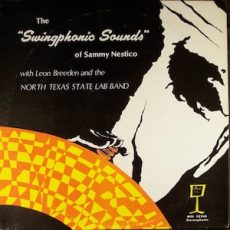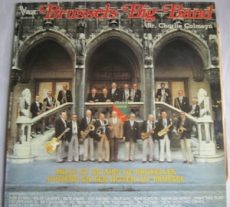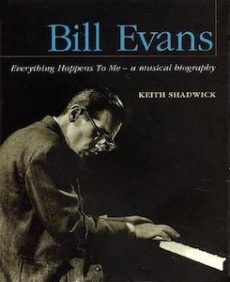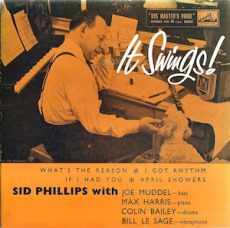
Daily Dose Of Jazz…
Harold Leon Breeden was born on October 3, 1921 in Guthrie, Oklahoma. At three his parents moved to Wichita Falls, Texas where he grew up and graduated from high school. He attended Texas Wesleyan College in Fort Worth, Texas on a scholarship and later transferred to Texas Christian University where he completed both his bachelor’s and master’s degrees. A move to New York City had him doing graduate work at Columbia University, he studied clarinet with Reginald Kell with whom Benny Goodman studied.
In 1944 after military duty he became the Director of Bands at Texas Christian University and later served as Director of Bands at Grand Prairie High School, then Director of Jazz Studies at the University of North Texas College of Music, where Breeden remained until his retirement in 1984.
Breeden also played saxophone and studied composition and arranging at Texas Christian. As a producer of the NBC Symphony, conducted by Arturo Toscanini, he declined a position as staff writer and arranger for the orchestra to take care of his ill father. Moving back to Texas he worked as music coordinator for KXAS-TV in Fort Worth, known at the time as WBAP-TV.
In the last several years of his life, Leon frequently soloed on clarinet with The Official Texas Jazz Orchestra. In 2009, The University of North Texas awarded him with an honorary Doctor of Humane Letters degree.
Clarinstist, educator, composer and director Leon Breeden, who made the One O’Clock Lab Band internationally famous, died of natural causes on August 11, 2010 in Dallas,Texas.
More Posts: bandleader,clarinet,composer,educator,history,instrumental,jazz,music

Daily Dose Of Jazz…
Paolo Ricca was born on October 2, 1963 in Turin, Italy and began studying classical piano at an early age. After school, he continued his studies and expanded into the realm of jazz performance and composition at CPM Music Institute in Milan, Italy where he graduated, under the tutelage of Franco D’Andrea.
The early 1980’s saw the beginning of his professional career performing for live audiences. A few years later Paolo performed in over 3000 concerts and festivals all over Europe, while simultaneously building a solid reputation as a studio musician. He has collaborated with John Etheridge, Soft Machine, Stèphane Grappelli, John Williams, Lee Brown, La Verne Jackson, Mokhtar Samba ( Joe Zawinul’s Sindycate, Jaco Pastorius, Carlos Santana, M. Orza, Dee D. Jackson, Haddaway and many others.
He ventured into music technology, computers, sequencers, looping, and sampling. Ricca began studio work with engineering, recording, as well as arranging and composing. He has worked for major recording companies, producing music on both a national and an international level.
Pianist Paolo Ricca, whose 2023 release, My Italian Piano Songbook, won First Prize for Best CD at the prestigious Swiss International Music Competition, continues to perform, tour and record as a leading voice in contemporary international piano music.
More Posts: arranger,bandleader,history,instrumental,jazz,music,piano

Daily Dose Of Jazz…
Alphonse “Al” Goyens was born October 1, 1920 in Wetteren, Belgium. He took piano lessons as a child but abandoned them at the age of twelve. In 1936, he bought a trumpet and began playing music again, teaching himself and playing with amateur bands. Completing a degree in industrial engineering, he was interned in Germany at the outbreak of the war and had to stop playing. Starting again he played too intensely, which paralyzed his lips, but overcame this situation through careful practice.
His return from captivity saw him a member of orchestras led by Henri Van Bemst and Jean Omer, making his first recordings with the latter. He then joined the orchestra of Léo Souris who played for the American army in Germany. Returning to Belgium, Al joined other musicians to form the Orchestre régulier du Cosmopolite , which gave him the opportunity to perform with major names of the jazz scene who were guests in Brussels.
In 1949 he and his orchestra again toured for the US Army, performing in Germany, the Azores, and the USA. Goyens led his orchestra for nearly a decade from 1949 featuring Jacques Pelzer, Bobby Jaspar, Francy Boland, Jean Warland, Freddy Rottier, and occasionally Don Byas and Kenny Clarke.
Once again he went on to work for the US Armed Forces and later with an international orchestra in Spain and the United States. Al later arranged and played in the Brussels Big Band. His favorite trumpeters were Clifford Brown, Dizzy Gillespie, and Clark Terry but his playing was more reminiscent of Harry Edison.
Trumpeter, arranger and orchestra leader Al Goyen played flugelhorn, and bugle, who never recorded as a leader, appreciated the sound of the muted trumpet, died on January 30/31, 2008 in Forest/Vorst, Belgium.
More Posts: arranger,bandleader,bugle,flugelhorn,history,instrumental,jazz,music,trumpet

On The Bookshelf
A Grammy winner and pioneer of multi-track jazz recording, Bill Evans was the pianist on Miles Davis’ classic Kind of Blue album and a key figure in the development of modern jazz piano.
This biography details his wide-ranging and absorbing career, from freelance work in the 1950s, through his groundbreaking trios and solo releases, to his relationships with various record labels, to the intense final phase before his death in 1980.
Bill Evans: Everything Happens To Me contains full-page photos along with a selected discography that highlights key recordings throughout his career as a leader, co-leader and sideman.
Author Keith Shadwick has written for several magazines as well as Jazz: Legends of Style and The Illustrated Story of Jazz. He contributed Masters of Jazz Saxophone.

Daily Dose Of Jazz…
Joseph C Mudele was born on September 30, 1920 and grew up in Downham, South East London. He left school at the age of 14 and began singing and playing in local bands. He began playing double bass at the age of 17 after buying an upright bass in a junk shop. After having served in the war in the Royal Air Force, he studied for a while with principal double bassist James Merritt with the Philharmonia Orchestra.
His professional playing career took off in 1947 with clarinetist Carl Barriteau, accordionist Tito Burns and the Jimmy Macaffer Band. He toured with Hoagy Carmichael during the autumn of 1948, and played with Charlie Parker and drummer Max Roach at the 1949 International Jazz Festival in Paris.
In 1948 Mudele became a founder member of Club Eleven, a Soho nightclub open between 1948 and 1950 which played a significant role in the emergence of the bebop jazz movement in Britain. After the club was closed he became a founder member of the John Dankworth Seven, while also continuing to play with others during the Fifties. During this period Mudele also played for Sophie Tucker, Judy Garland and Billy Eckstine.
Joe supplemented his club performances with extensive radio, television and recording studio work outside of jazz from the 1960s onwards. In later life Mudele lived in Bromley, played weekly at the Bexley Jazz Club in Kent, and took over management duties after owner Les Simons died in 2004. In 2010 he recorded For All We Know with pianist Robin Aspland and drummer Geoff Gascoyne.
Double bassist Joe Mudele, who was sometimes known as Joe Muddel or Muddell and was one of the Club Eleven Collective, died at age 93 on March 7, 2014.
More Posts: bandleader,bass,history,instrumental,jazz,music



